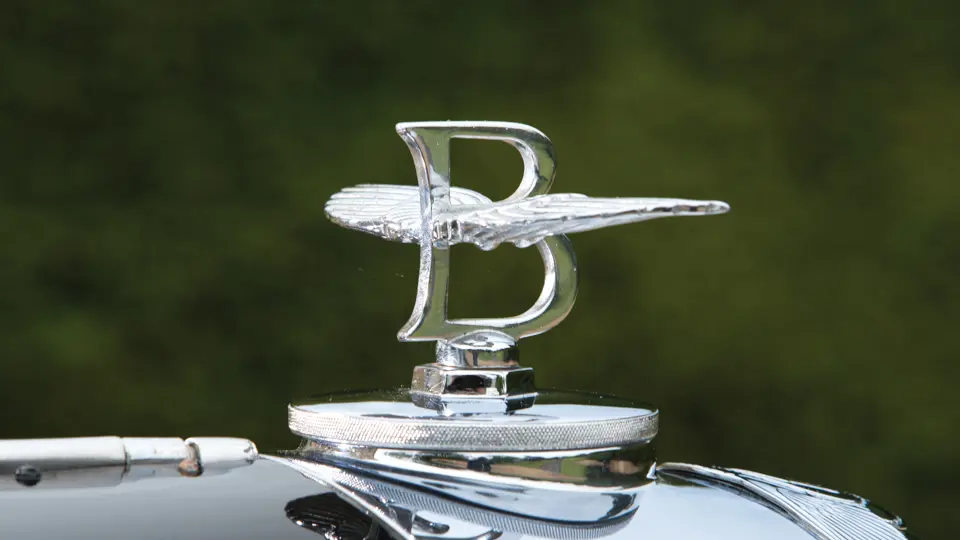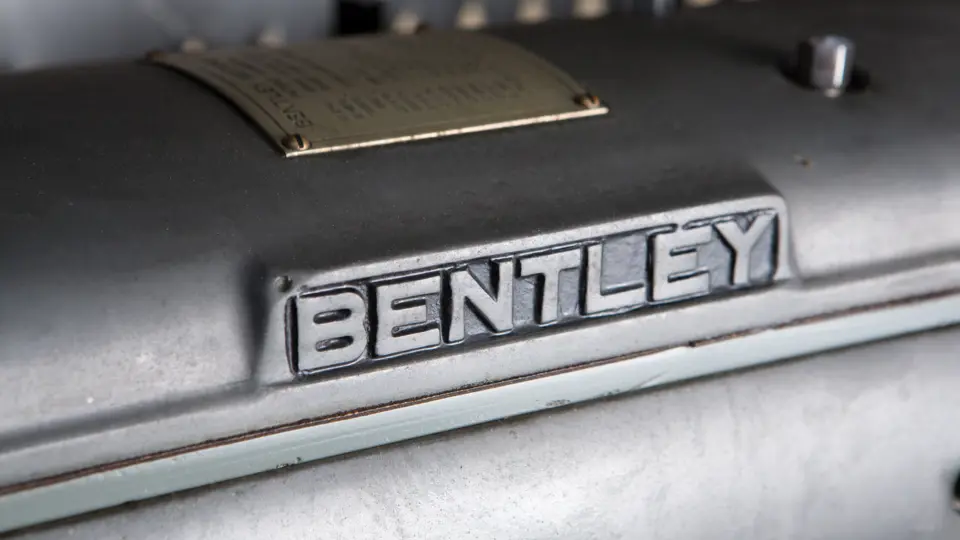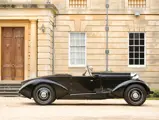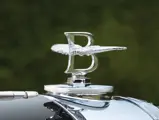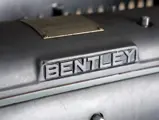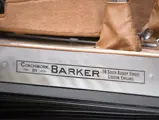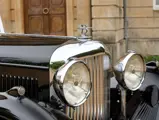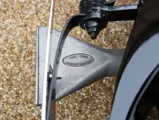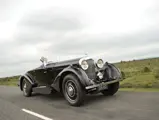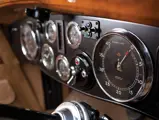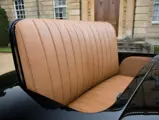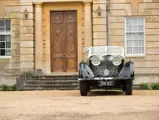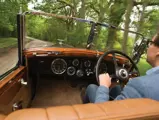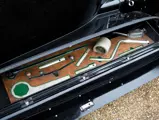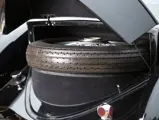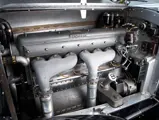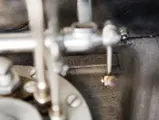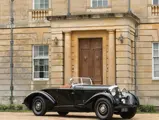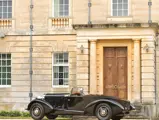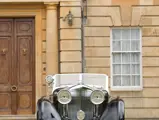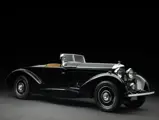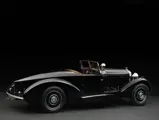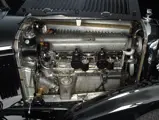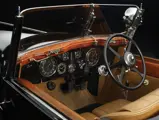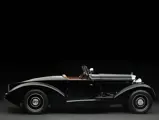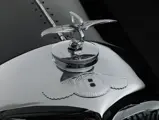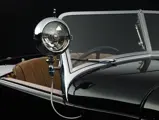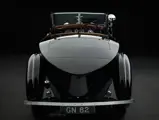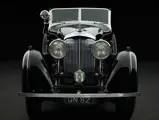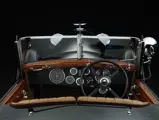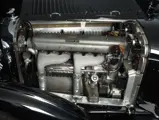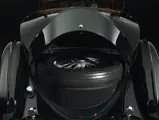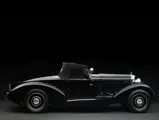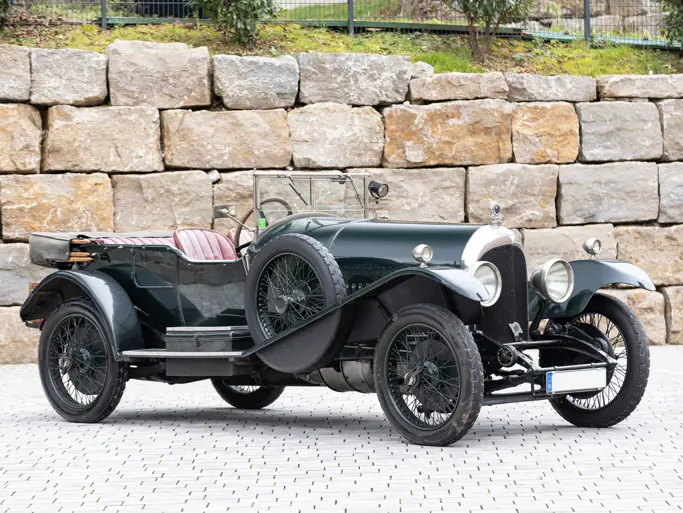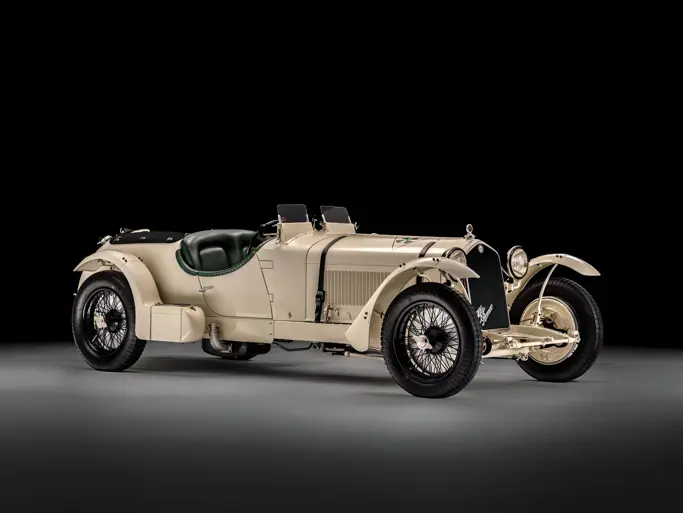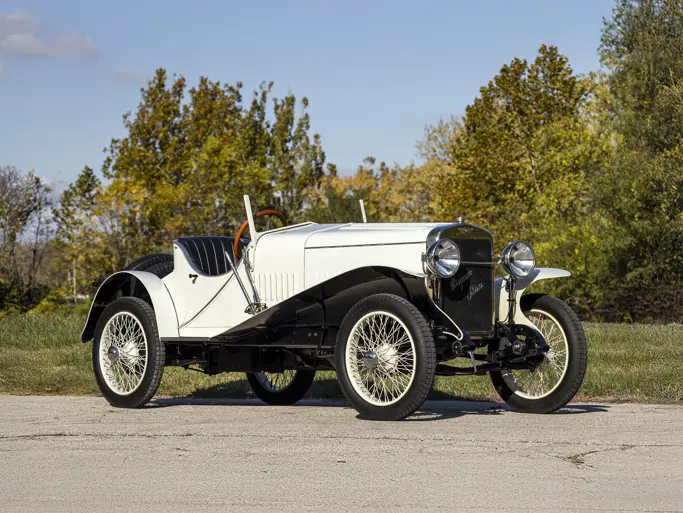
1931 Bentley 8-Litre Sports Coupe Cabriolet by Barker
{{lr.item.text}}
$3,750,000 - $4,750,000 USD | Not Sold
{{bidding.lot.reserveStatusFormatted}}
- The only original two-passenger roadster built on an 8-Litre chassis
- A one-off, bespoke “boattail” design by Barker
- Matching-numbers chassis, engine, and gearbox
- Authenticity verified by vintage Bentley authority Clare Hay
- Powerful, beautiful, and absolutely unique—the ultimate 8-Litre
200–230 bhp (44.9 RAC hp), 7,983 cc SOHC inline six-cylinder engine with twin SU H08 carburetors, four-speed sliding-pinion manual gearbox, solid front axle and live rear axle suspension with half-elliptic leaf springs and double-acting dampers, and four-wheel Dewandre mechanical drum brakes. Wheelbase: 144 in.
Please note, internet bidding will not be offered on this lot. Interested parties wishing to bid remotely are encouraged to bid via telephone or absentee. Please click here to register.
THE BENTLEY 8-LITRE
The gentleman sportsman reviewing the selection of fine automobiles available to him in 1930 would certainly have been tempted by the 8-Litre Bentley. For the man who had everything, it was the automobile that had everything.
Presence: It was over 20 feet long and as tall as a man, with an engine compartment more reminiscent of a locomotive than a car. Style: It was ideally proportioned for beautiful custom coachwork. Engineering: The exhaust pipe was asbestos-lagged, encased in aluminum to reduce resonance, and then coupled to a silencer the size of a 20-gallon waste bin. The starter engaged with surgical precision. Performance: Even with the heaviest custom coachwork, the 8-Litre was incredibly brisk and capable of 100 mph.
“This car can be driven really softly on its high top gear, as slowly as a man walks, and can accelerate from that without snatch and without difficulty,” proclaimed The Autocar.
In every sense, the 8-Litre was probably the greatest British automobile ever produced. Yet, only 100 chassis were built before the sheer cost of developing and building such a machine drove the company into receivership. Other Bentleys would come in the decades to come, but the 8-Litre was the last of the “W.O.s,” the great driver’s cars built under Mr. Bentley himself.
The majority of 8-Litre chassis were fitted with heavy, closed bodies, which were, for obvious reasons, often tossed aside by later owners and replaced with more sporting open coachwork. To find an 8-Litre with an open body that is the original for that chassis is extraordinarily rare, and most of those that do exist are four-passenger styles. Only a single 8-Litre was outfitted with two-passenger roadster bodywork when new, and that car is the one offered here today.
THE BARKER SPORTS COUPE CABRIOLET
Chassis number YR 5099 was the forty-ninth 8-Litre Bentley built, and it was one of thirty-four 12-foot wheelbase chassis intended for more sporting bodywork. It was ordered by Sir P. Malcolm Stewart, who was the owner of the London Brick Company, the largest brick manufacturer in the United Kingdom at the time. Stewart’s firm was highly regarded for its exceptionally fine working conditions, and after helping the Labour government devise methods to reduce unemployment in England, he was made a baronet in 1937.
Sir Malcolm was a devout Bentley enthusiast who had earlier ordered a 6½-Litre Speed Six, chassis number LB2330. That car had been bodied by Barker & Company, the London coachbuilders to the British Royal Family and numerous Indian princes, which was renowned for the fine quality of their work on a variety of chassis. Barker’s design for the Stewart Speed Six was a dashing two-passenger roadster with flowing individual fenders, curved pontoon-style running boards, and a tail that tapered into a gently rounded point, reminiscent of a boat’s stern. In American parlance, it would have been called a “boattail” speedster. Barker dubbed it a sports coupe cabriolet.
The owner apparently enjoyed that car, as he ordered this 8-Litre chassis to be finished with a virtually identical design. Sir Malcolm is pictured behind the wheel of chassis number YR5099 on page 132 of Johnnie Green’s respected Bentley: Fifty Years of the Marque. He retained ownership of the car for five years, and in 1934, it underwent minor maintenance, which was followed by the addition of a D.W.S. jacking system.
In February 1935, the 8-Litre passed to its second owner, G. Stewart Ferguson of Birmingham, England. At some point before or during World War II, it was taken to Scotland, and following the war, it was owned by one J.A. MacHarg. Mr. MacHarg modified the rear of the body to convert it into a four-passenger car, which was the opposite of what usually happens with 8-Litre chassis, and he drove the Bentley for some time.
In the late 1970s, the car was acquired from Mr. MacHarg by well-known McLaren racing team associate, Formula One boss, and car collector Peter Agg. Mr. Agg oversaw the Bentley’s restoration to its elegant original form, which included reshaping the rear of the body in the style of its original Barker design. The car won First Place at the highly competitive Bentley Drivers Club Concours at Kensington Garden in 1983, prior to being sold stateside to Bentley expert Frank Miller. Miller displayed the car at the Pebble Beach Concours d’Elegance in 1987, where it wore a two-tone blue similar to its original finish.
For the past several years, chassis number YR5099 has received the best of care as part of one of Europe’s most prominent collections of fine pre-war automobiles, where it was looked after by noted Bentley historian and restorer Graham A. Moss. Most recently, a report was commissioned from esteemed Bentley authority Clare Hay, who is known for her painstaking research into every component of the surviving “W.O.” cars. Hay’s comprehensive report, which accompanies the car, records, all-importantly, that this sole original 8-Litre roadster retains its original chassis frame, engine (number YR5099), and gearbox.
All is sorted and in order underneath the bonnet, where you will find SU H08 carburetors correctly finished in eggshell black, a Bosch starter, a Whittle belt-drive fan, a Tecalemit one-shot pump, Smithermet shutter controls, Bosch fuse boxes, and a Bosch FG12 horn and bracket, and these are all to standard. Special-order Twin Delco distributors are still fitted, as when new.
When seated behind the 18-inch Bluemel-sprung steering wheel, the driver is presented with an impressive instrument panel, which includes a larger-than-standard (probably fitted to special order when new) AT speedometer and odometer, a Jaeger clock, a Weston ammeter, a Cambridge thermometer, a Bosch ignition switch and lighting/starter switch, a Lucas headlamp dimmer switch, a rectangular Hobson 25-gallon telegauge, and a Smiths 0–100 pound oil pressure gauge. The bespoke exhaust cut-out, which is operated by a floor lever, is still in place.
Lucas P100DB headlamps are still fitted, as are the Lucas snail-pattern sidelights and twin Lucas S220 metal-bodied “diver’s helmet” taillights. In addition, a correct Lucas spotlight is fitted to a bracket over the dynamo casing. The rare Grebel spotlight, which is easily adjustable by the driver to be used for reading road signs, is present, and all of these items are correct for 1931.
Driving an 8-Litre Bentley is at once familiar yet very distinct from a more modern car. First is its size. In a word, it is massive. Steering feels heavy yet still lighter than expected. In a long, sweeping curve, the steering-wheel-to-road surface sensation sends a very strong message to the driver. The car needs to be steered, as opposed to more modern cars that take themselves around the bends.
An 8-Litre engine is heavy, its acceleration is thrilling, and one quickly senses the enormous power of its eight liters. W.O. Bentley began his career as a locomotive engineer, so it is not surprising that this car pulls like a train. The engine, when properly sorted, is whisper-quiet and smooth in comparison to many cars of that era, and the exhaust note is, in a word, “delicious,” especially at as it “burbles” at idle. The brakes are also surprisingly effective for stopping a 5,000-pound car. Once the gearbox has been mastered, it is immensely satisfying to know just exactly how many revs are required before one can slip the lever into gear with nary a crunch. The ride is quite smooth and comfortable; therefore, it’s easy to understand why these cars were favored for long-distance touring when new. If one should, indeed, need further assurance, they need only to take in the gleaming, menacing black lines.
This bespoke two-seater has been restored to the highest standard and is accompanied by documentation from noted historians to assure the new owner of its matching-numbers authenticity. As it is being offered for the first time at public auction, it is worthy of close consideration and inspection by all motoring enthusiasts and collectors alike. It is, quite simply, the ultimate “W.O.” Bentley.




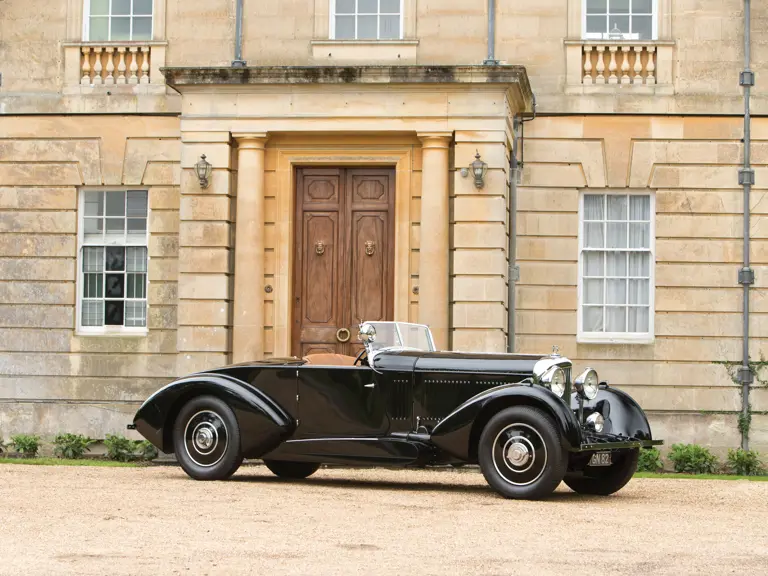

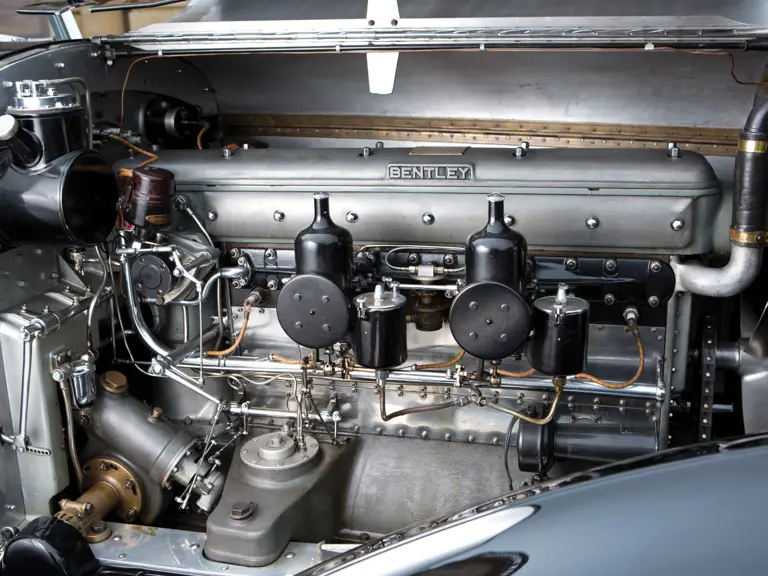
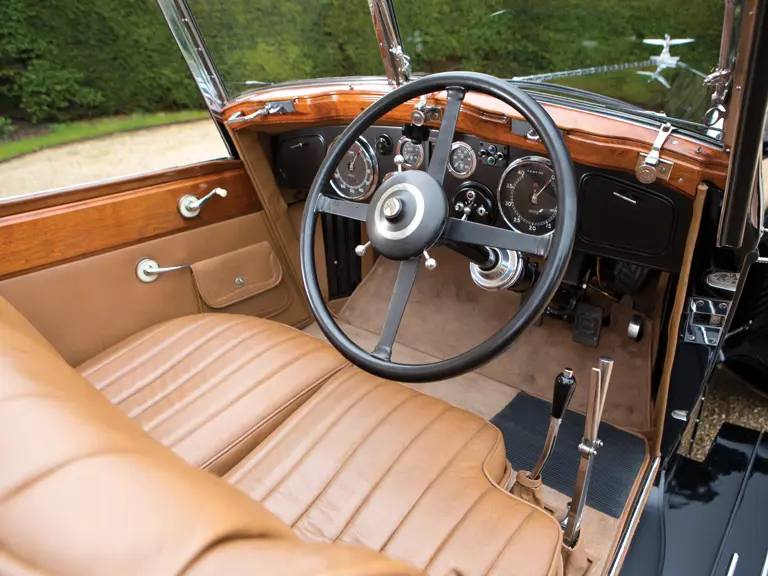
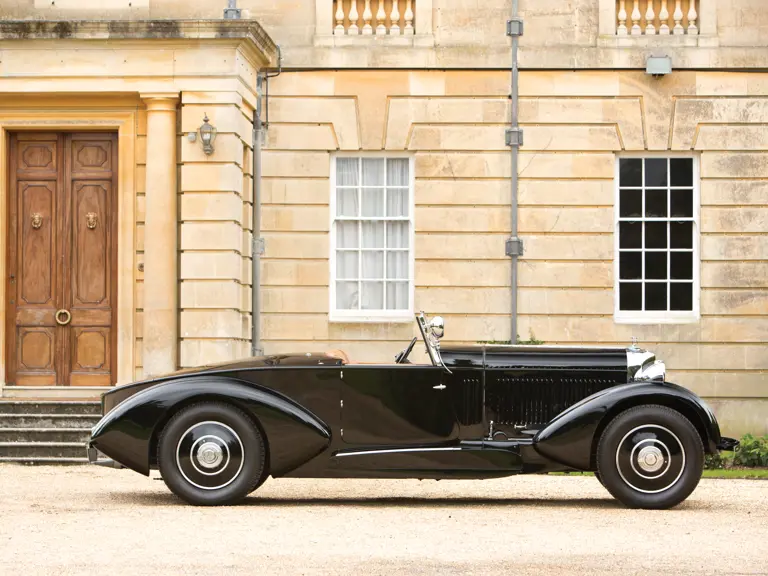
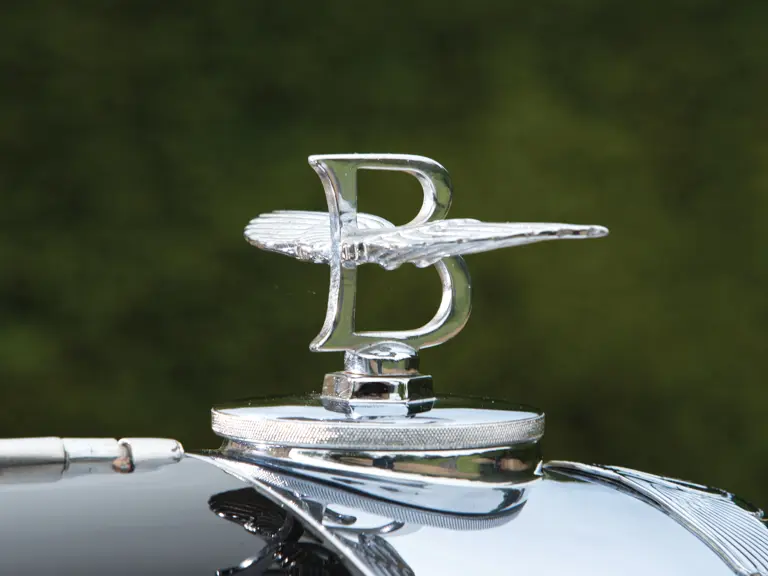
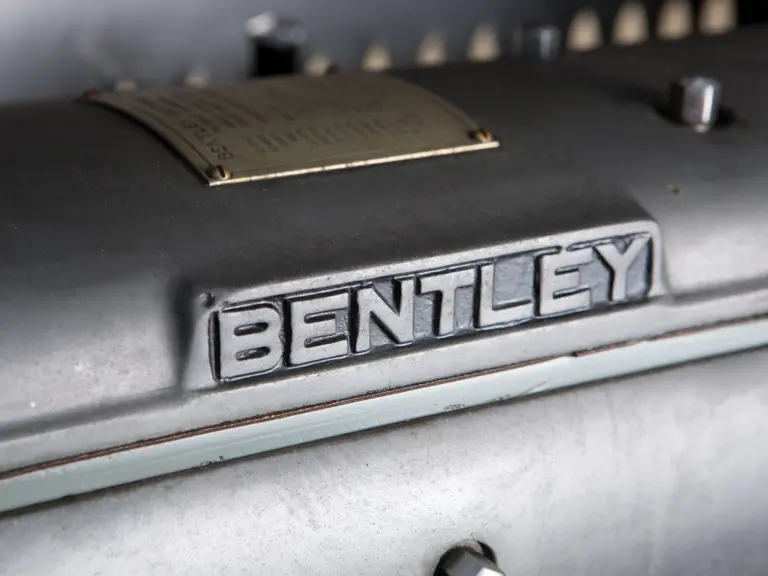
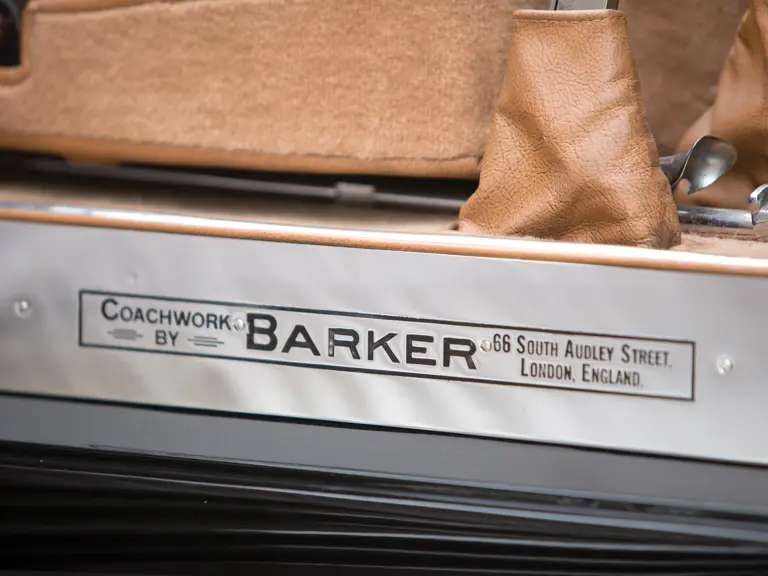


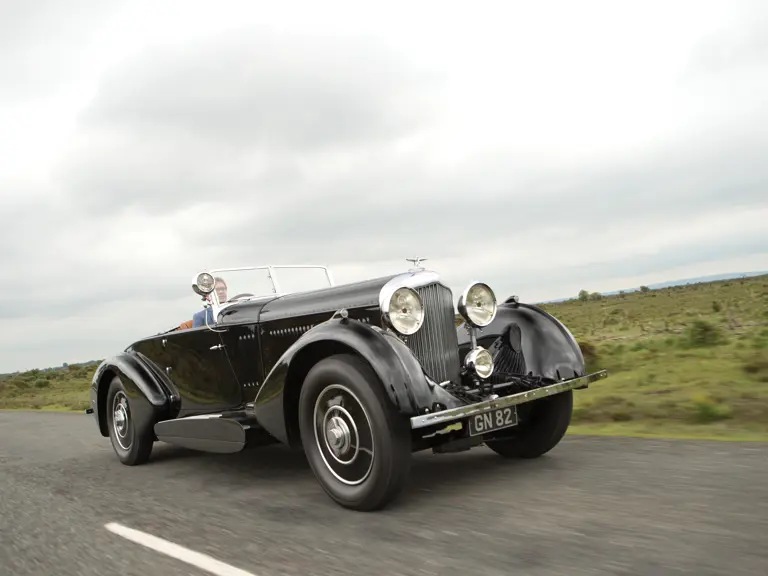
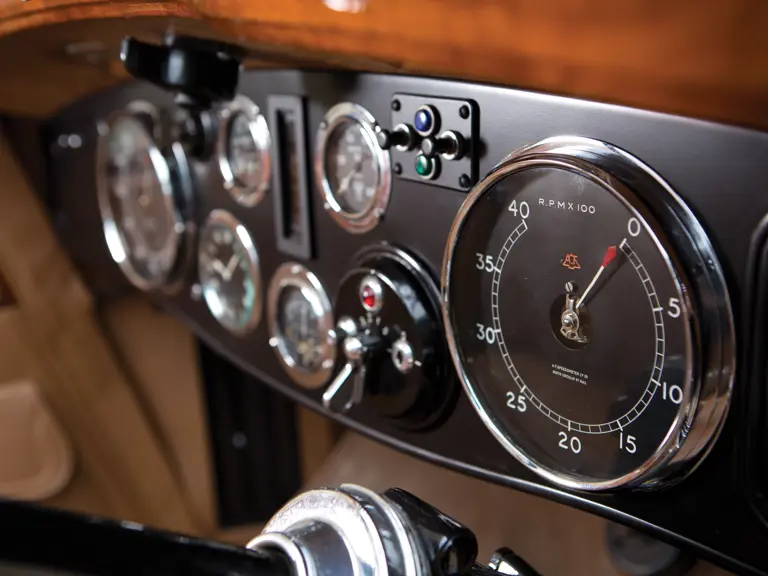
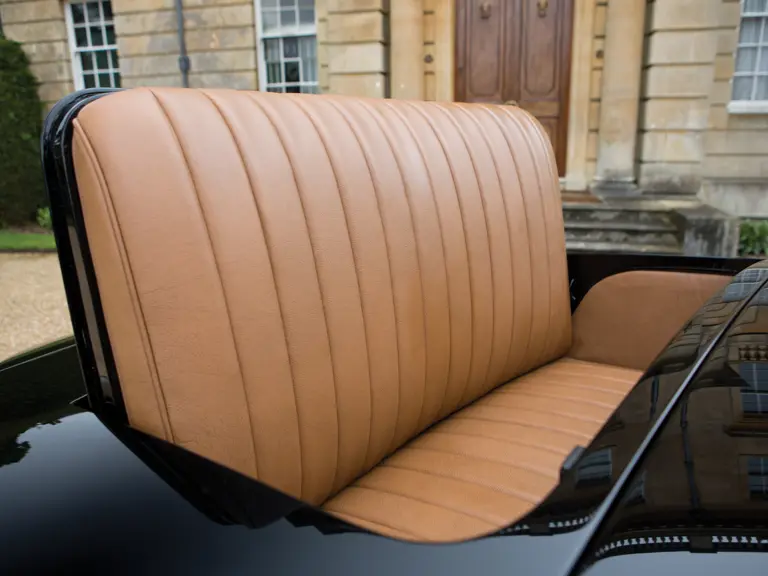
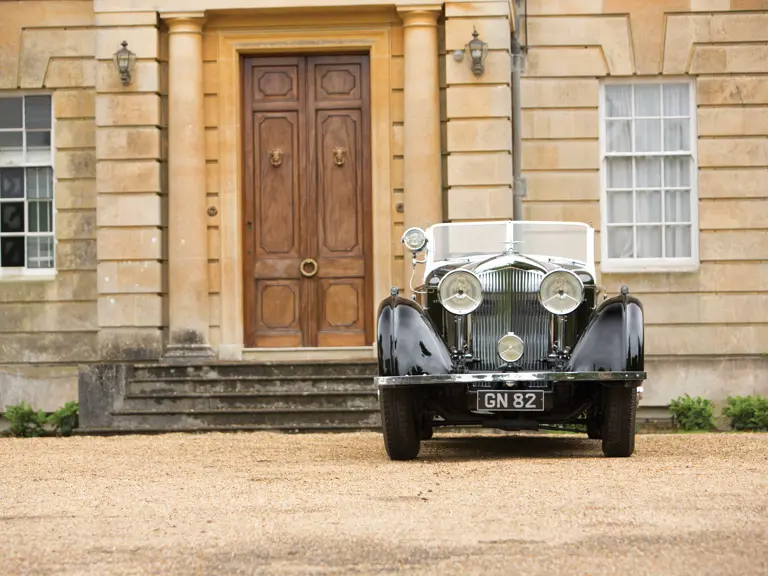
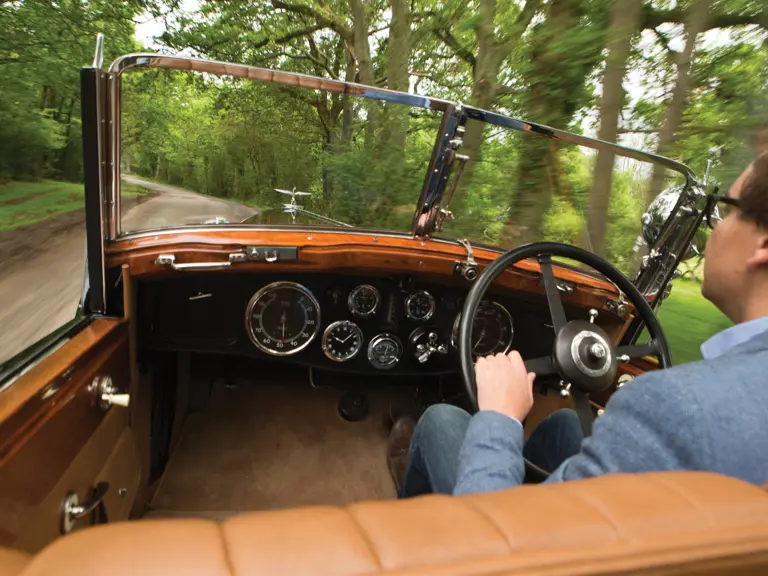
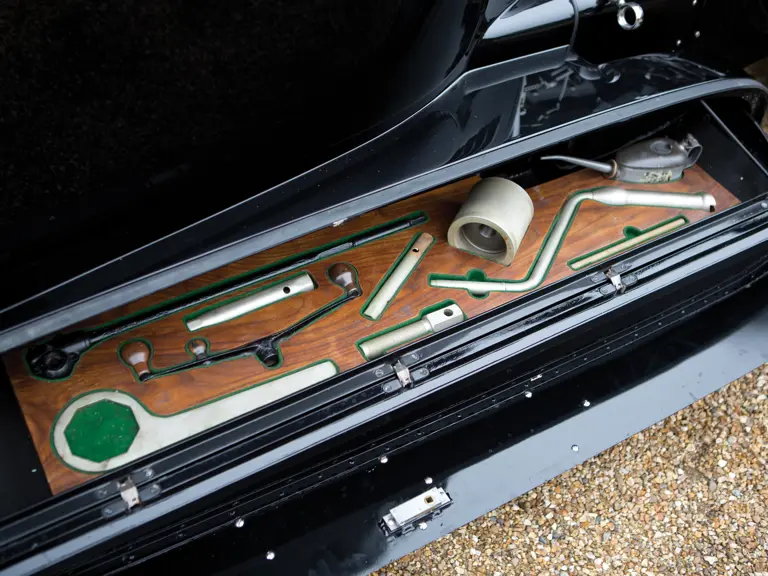
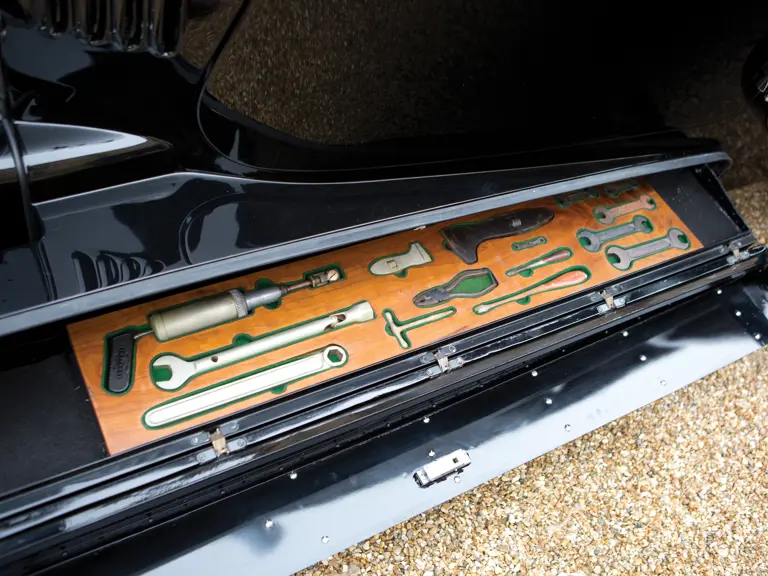
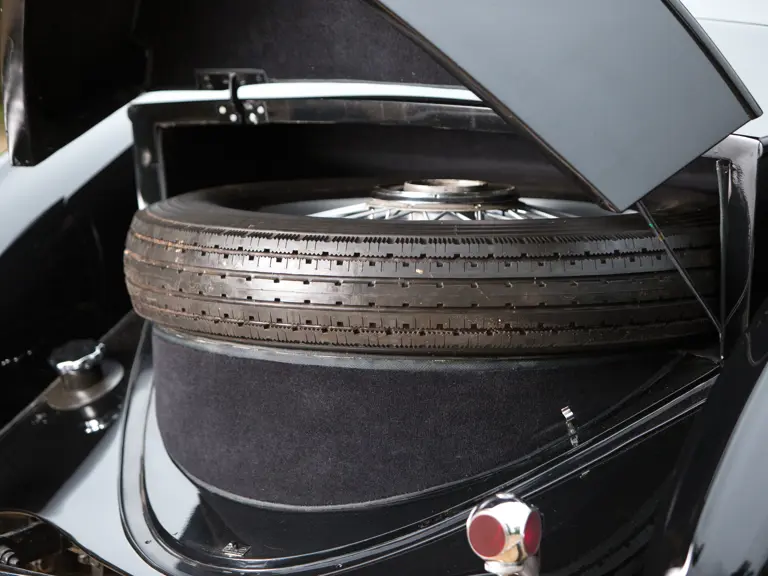
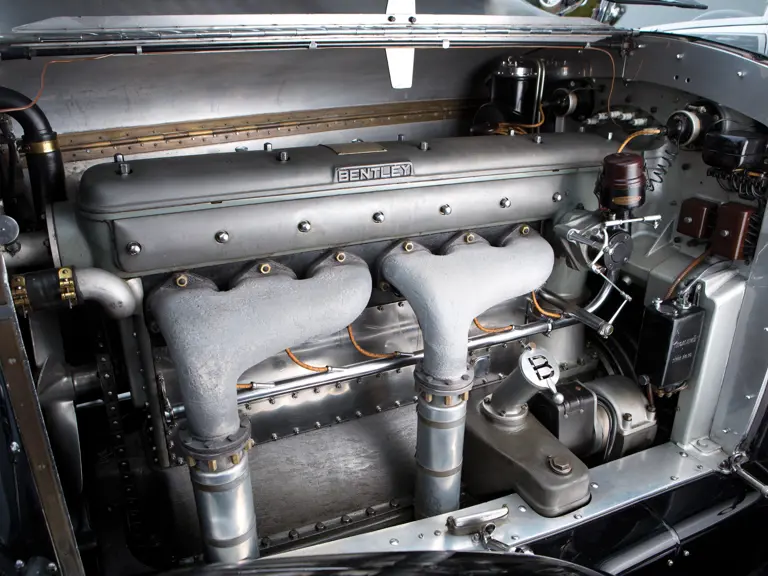
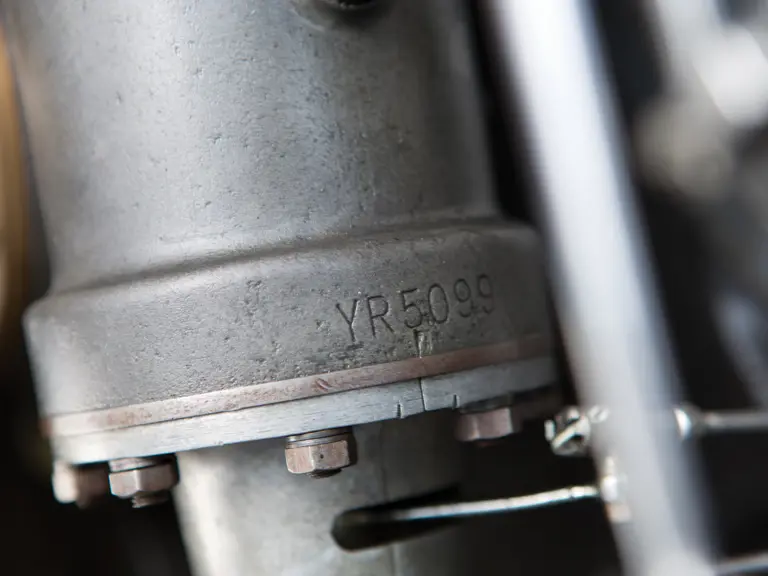
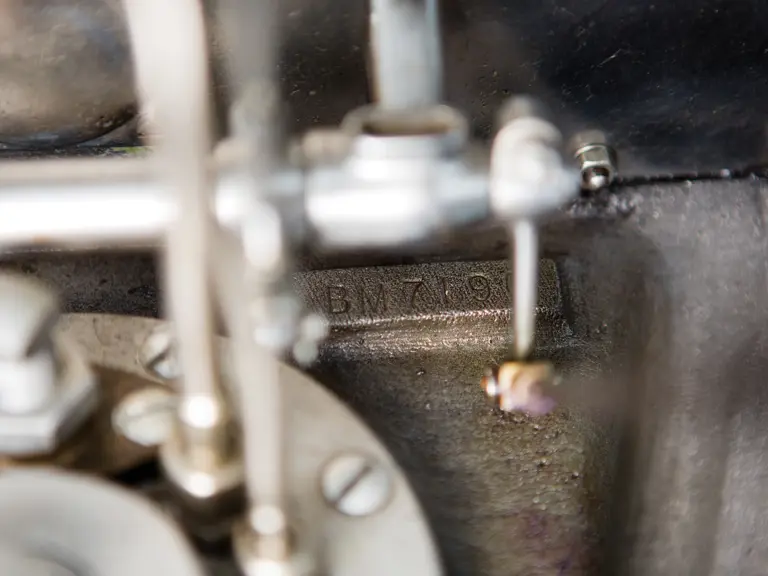
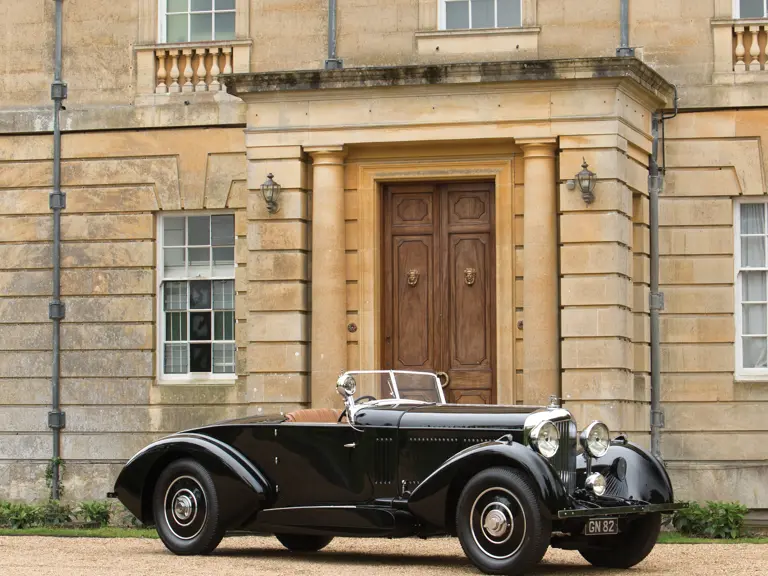
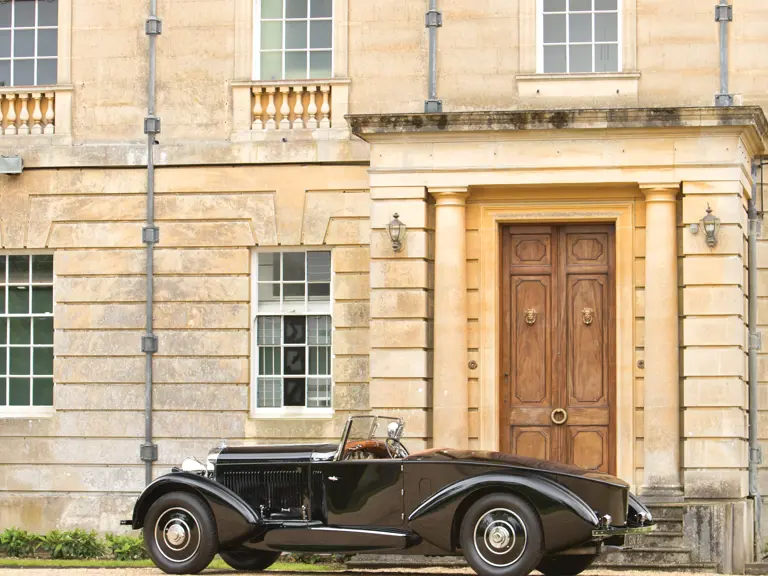
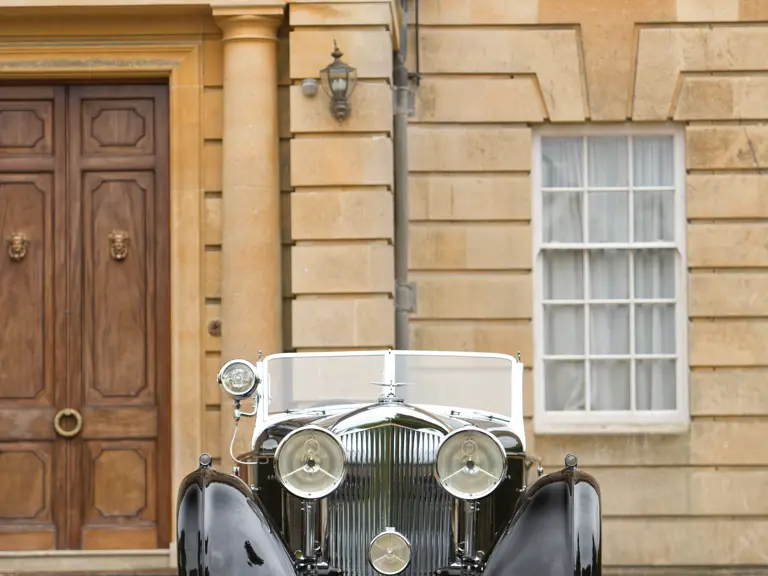
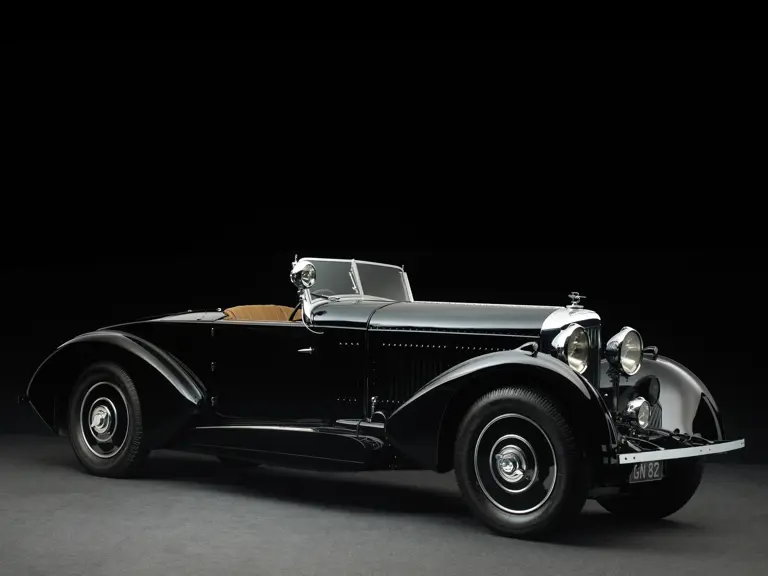
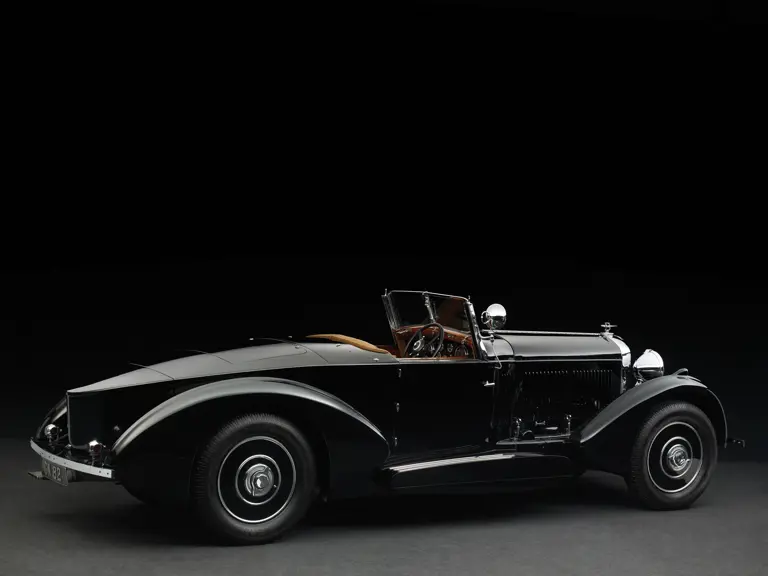
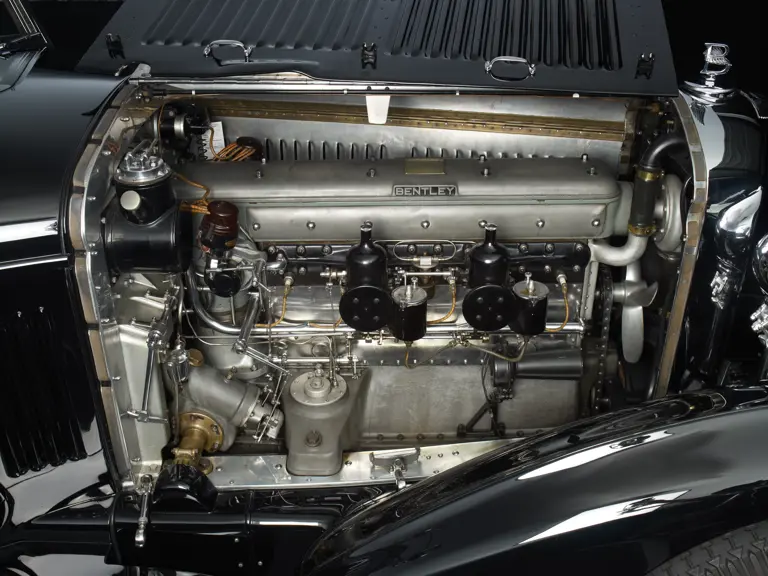
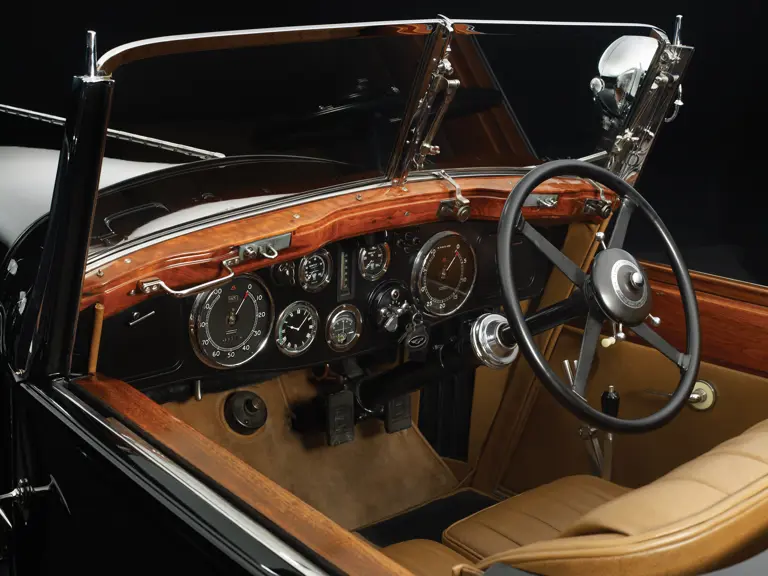
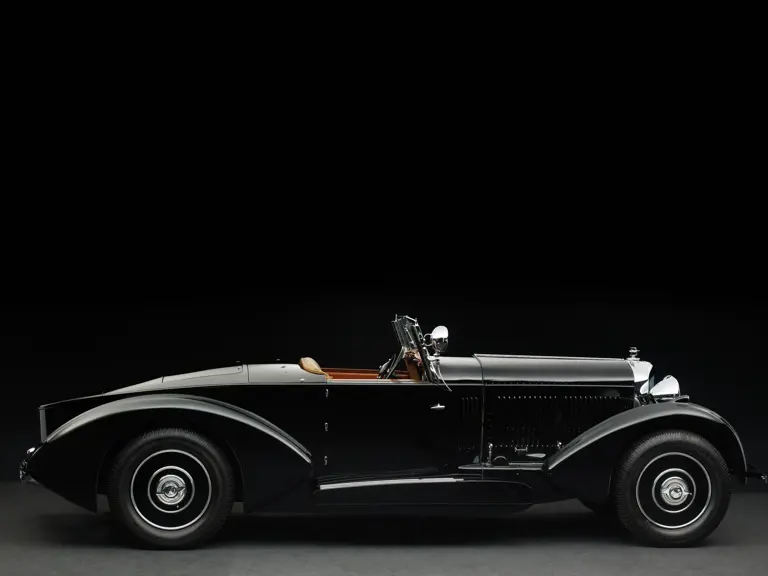
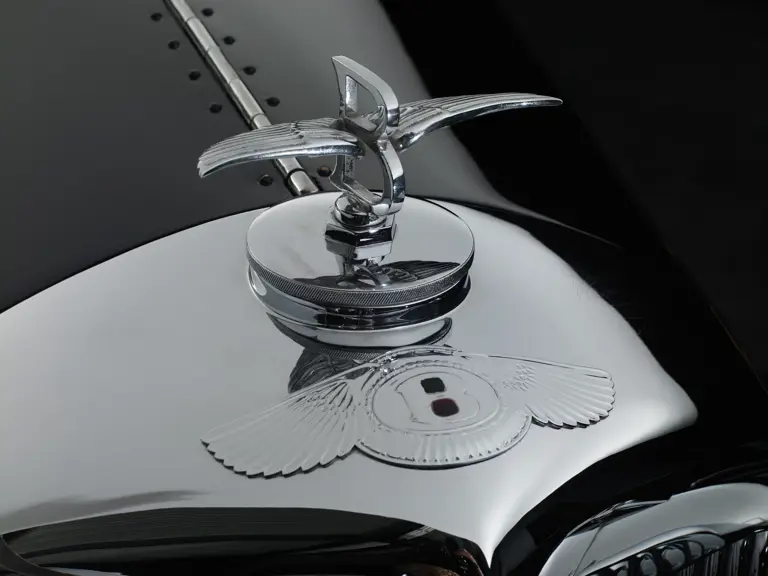
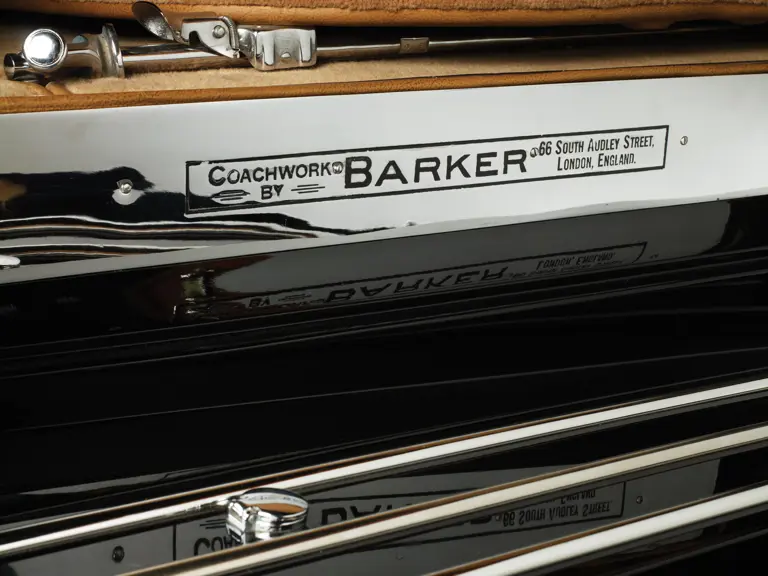
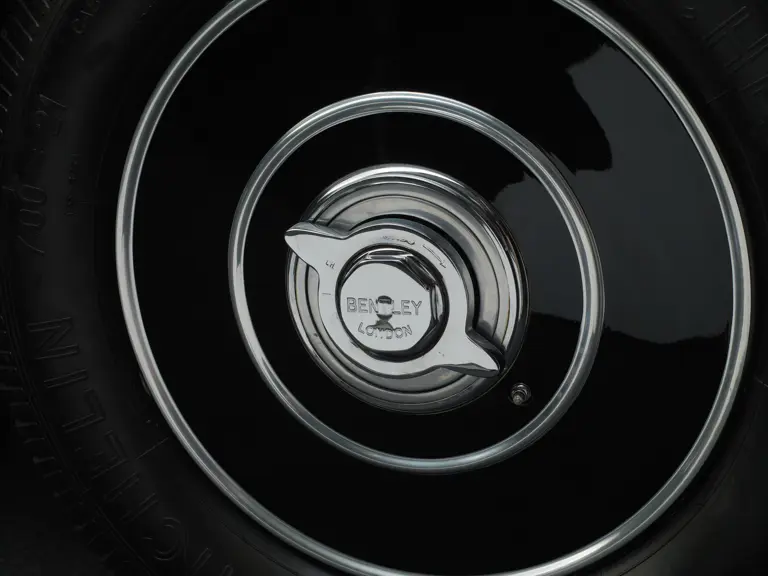
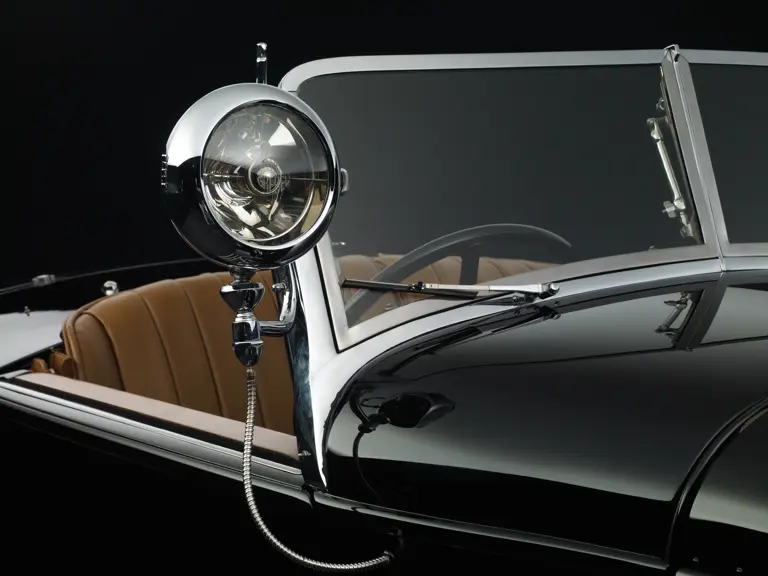
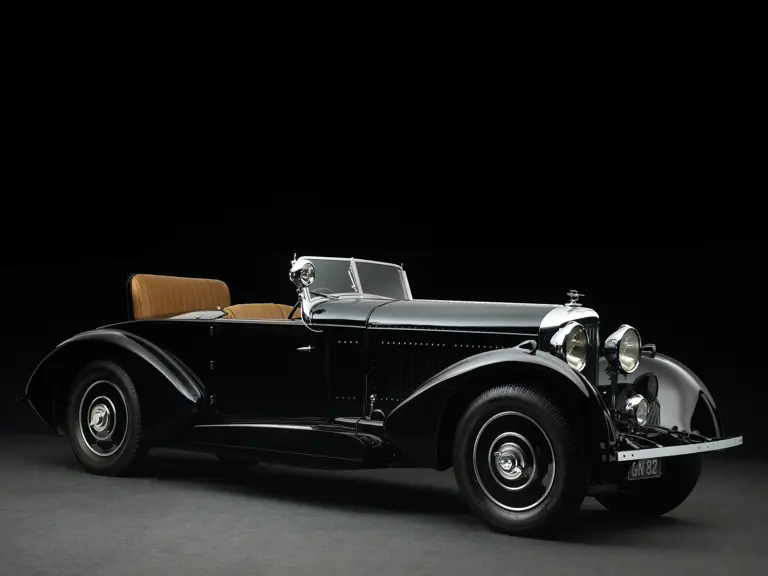
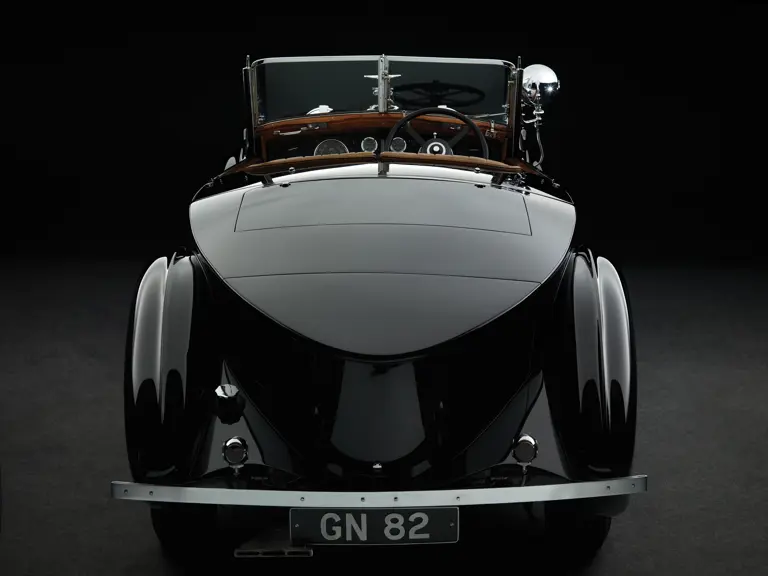
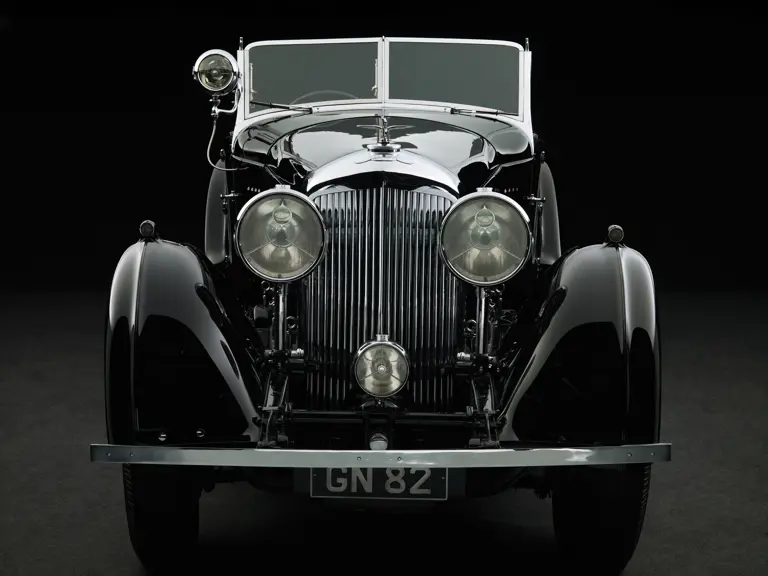
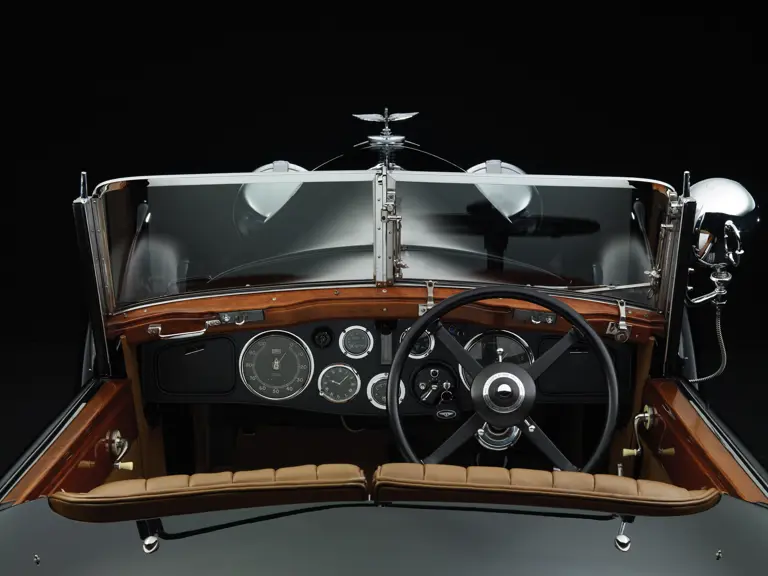
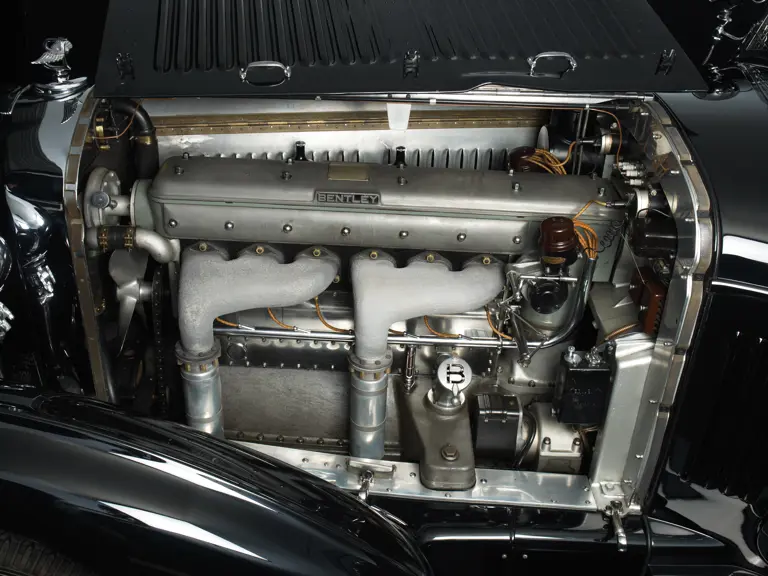
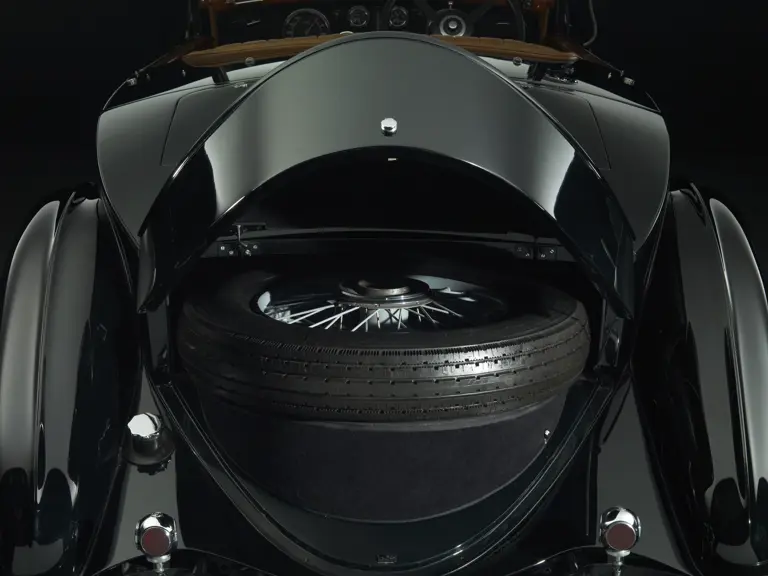
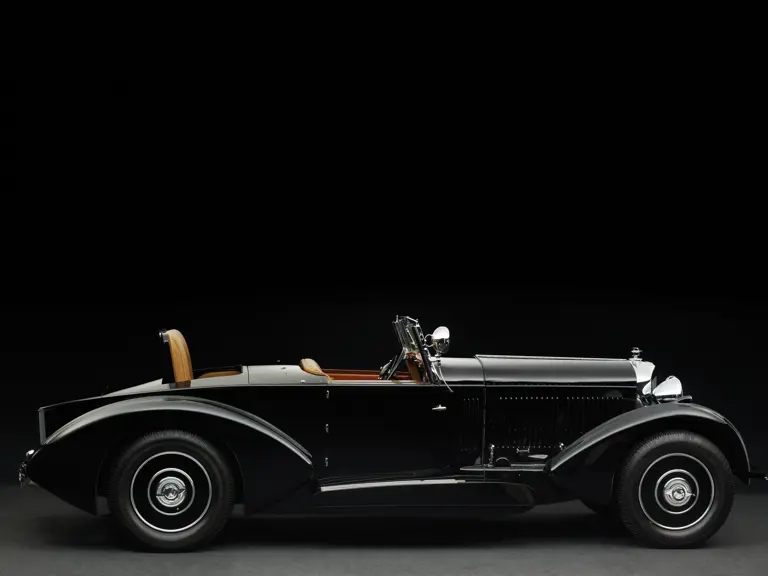
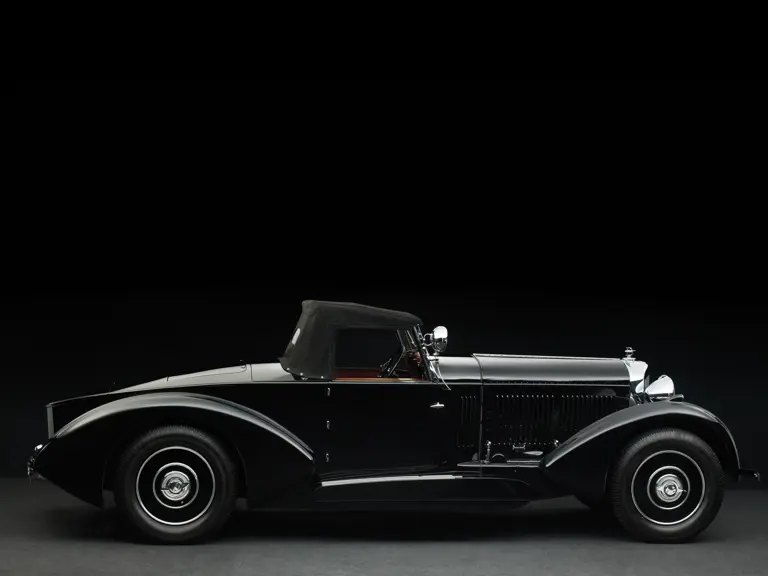
 | Monterey, California
| Monterey, California

